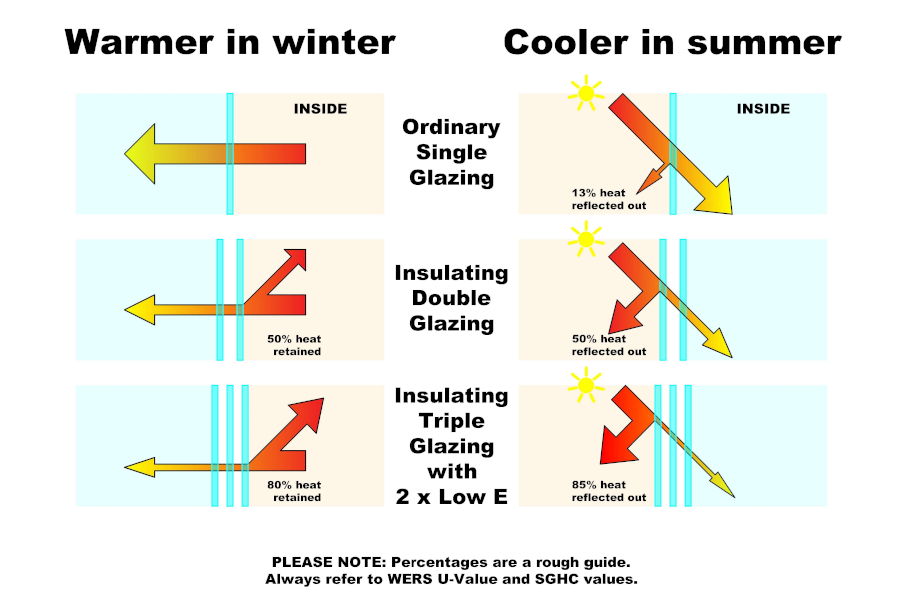All Categories
Featured
Table of Contents
Techniques For Double Glazing Windows in Embleton WA
Glazing merely suggests the windows in your house, consisting of both openable and fixed windows, as well as doors with glass and skylights. Glazing in fact just means the glass part, however it is typically utilized to describe all elements of an assembly consisting of glass, films, frames and furnishings. Paying attention to all of these elements will help you to attain reliable passive design.

Energy-efficient glazing makes your house more comfortable and significantly reduces your energy costs. Nevertheless, inappropriate or poorly created glazing can be a significant source of undesirable heat gain in summertime and substantial heat loss and condensation in winter. As much as 87% of a home's heating energy can be gotten and approximately 40% lost through windows.
Double Glazed Windows Sydney & Replacement Windows in Stirling Western Australia
Glazing is a substantial financial investment in the quality of your house. An initial financial investment in energy-efficient windows, skylights and doors can considerably reduce your yearly heating and cooling expense.

This tool compares window selections to a base level aluminium window with 3mm clear glass. Comprehending a few of the key residential or commercial properties of glass will assist you to choose the very best glazing for your house. Secret residential or commercial properties of glass Source: Adjusted from the Australian Window Association The quantity of light that passes through the glazing is referred to as visible light transmittance (VLT) or visible transmittance (VT).
4 Benefits Of Double Glazed Windows In The Summer in Karrinyup Perth
This may lead you to switch on lights, which will lead to greater energy costs. Conduction is how readily a material performs heat. This is understood as the U worth. The U value for windows (expressed as Uw), explains the conduction of the whole window (glass and frame together). The lower the U worth, the higher a window's resistance to heat flow and the better its insulating worth.
For instance, if your house has 70m2 of glazing with aluminium frames and clear glass with a U worth of 6. 2W/m2 C, on a winter season's night when it is 15C cooler outside compared to inside your home, the heat loss through the windows would be: 6. 2 15 70 = 6510W That is comparable to the overall heat output of a big room gas heating system or a 6.
Does Double Glazing Keep Heat Out in Northbridge WA

If you choose a window with half the U worth (3. 1W/m2 C) (for instance, double glazing with an argon-filled space and less-conductive frames), you can halve the heat loss: 3. 1 15 70 = 3255W The solar heat gain coefficient (SHGC) for windows (expressed as SHGCw) measures how readily heat from direct sunshine streams through a whole window (glass and frame together).
The lower a window's SHGC, the less solar heat it sends to the house interior. The real SHGC for windows is affected by the angle that solar radiation strikes the glass.
Guide To Double Glazing – Functional And Energy Efficient in Nedlands WA
When the sun is perpendicular (at 90) to the glass, it has an angle of incidence of 0 and the window will experience the optimum possible solar heat gain. The SHGC stated by glazing manufacturers is always calculated as having a 0 angle of incidence. As the angle increases, more solar radiation is shown, and less is transmitted.
Table of Contents
Latest Posts
Does Double Glazing Keep Heat Out in South Fremantle Perth
Which Double Glazed Windows Are Best For Summer? in Kalamunda WA
Why Install Stunning Double Glazing Windows During Summer? in Hamilton Hill Perth
More
Latest Posts
Does Double Glazing Keep Heat Out in South Fremantle Perth
Which Double Glazed Windows Are Best For Summer? in Kalamunda WA
Why Install Stunning Double Glazing Windows During Summer? in Hamilton Hill Perth